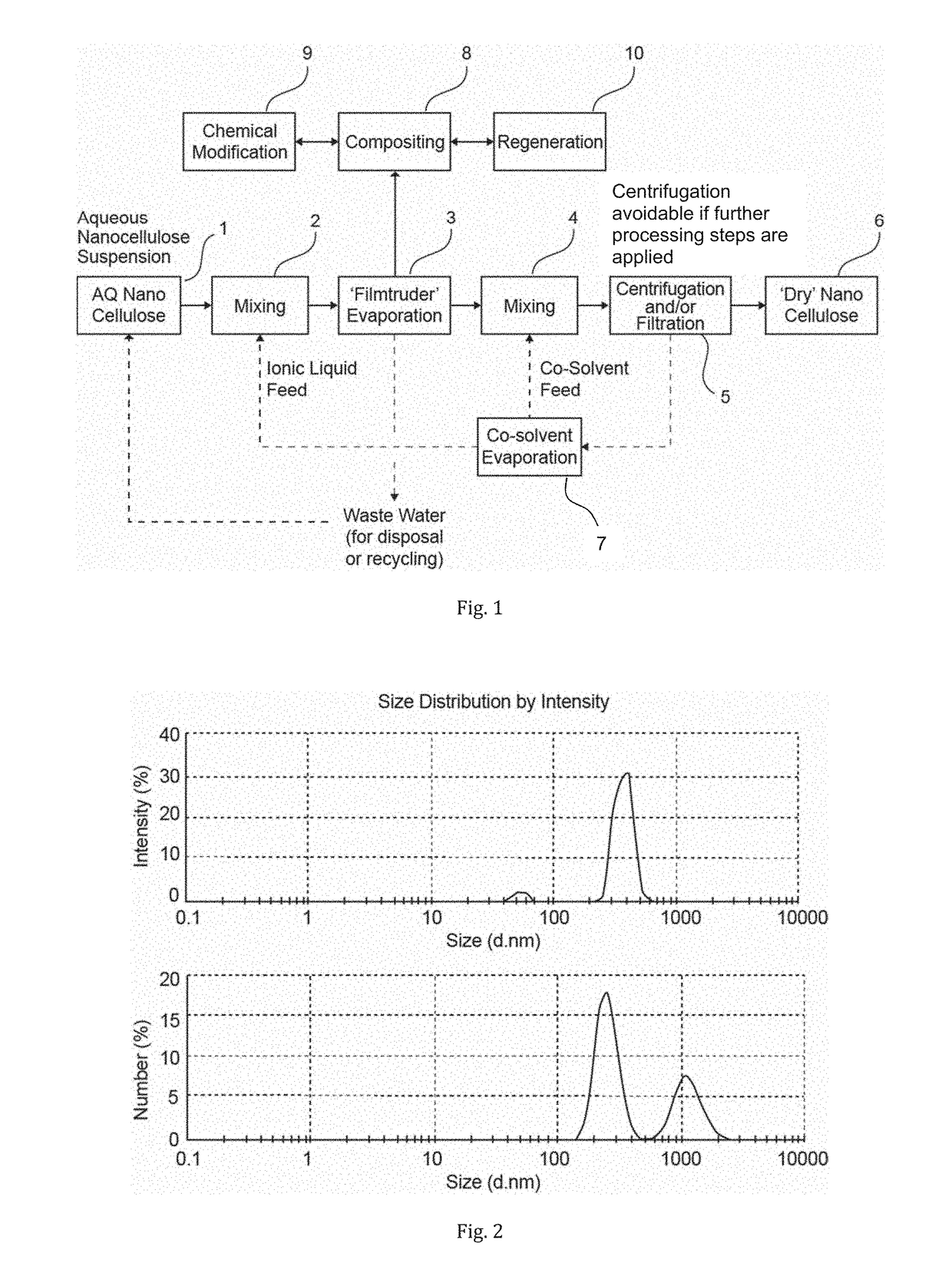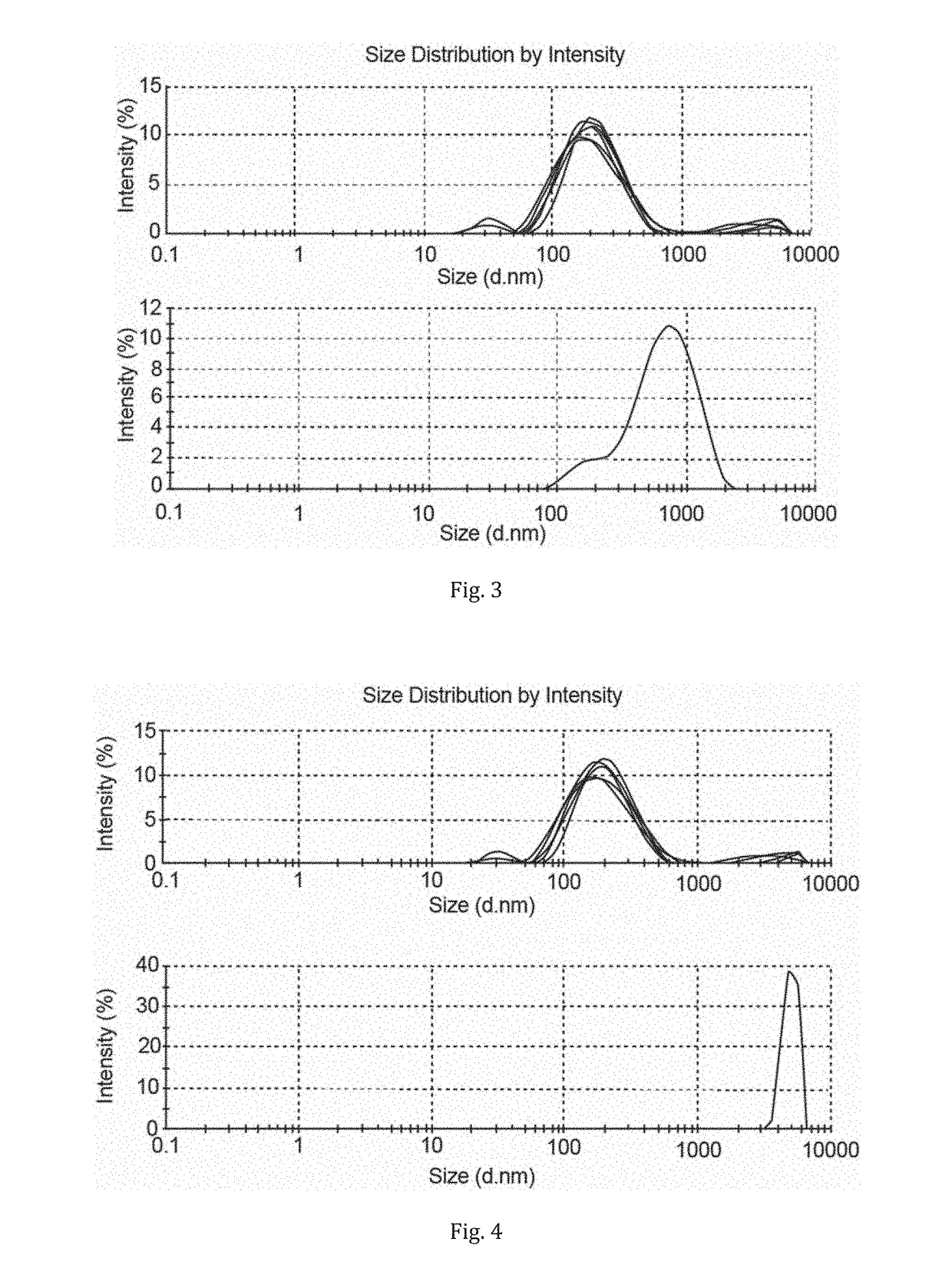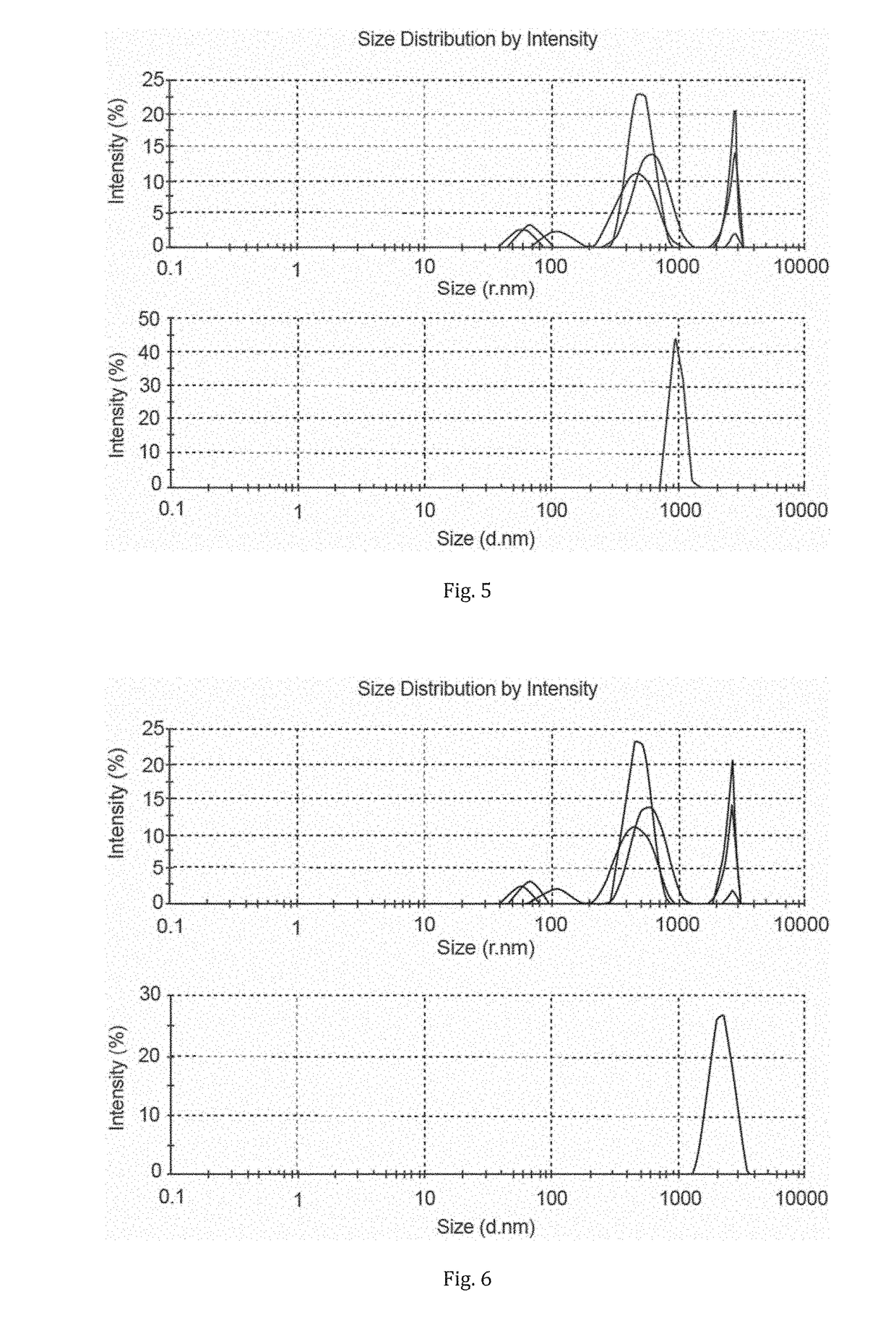Method of dewatering water soluble polymers
a water-soluble polymer and polymer technology, applied in the field of polymer treatment, can solve the problems of inability to pump, difficult to process, and difficult to dewater the dispersions,
- Summary
- Abstract
- Description
- Claims
- Application Information
AI Technical Summary
Benefits of technology
Problems solved by technology
Method used
Image
Examples
example 1
g Hemlock CNCs in TEGO® IL P9
[0113]10 ml of Blue Goose Biorefineries BGB Natural™ 7.4 wt / aqueous suspension of hemlock cellulose nanocrystals (CNCs) were added to 10 ml of diethyl(polypropoxy)-methylammonium chloride (TEGO® IL P9) from Degussa AG, to form a dispersion. The sample was rotary evaporated to remove water at 80° C. down to 10 mbar.
[0114]Then 4 ml of DMF was added to 0.5 g of the dispersion and shaken thoroughly to make homogeneous. This sample was further diluted in DMF and analysed by static light scattering (Zetaziser) and compared with the particle size distribution (by Zetasiser) of the starting CNCs (1 g dispersed in 1 L of water, FIG. 2).
[0115]As can be seen from FIG. 2, the ionic liquid dewatering procedure allowed for recovery of nano-sized cellulose. Hence, the ionic liquid dewatering step does not degrade or irreversibly aggregate the cellulose.
example 2
g Cotton CNCs in TEGO® IL P9
[0116]30.2 g of a 1.5 wt % aqueous suspension of cotton cellulose nanocrystals (CNCs) were added to 8.9 g of TEGO® IL P9 from Degussa AG to form a dispersion. The sample was rotary evaporated to remove water at 80° C. down to 10 mbar.
[0117]Then 4 ml of DMF was added to 0.5 g of the dispersion and shaken thoroughly to make homogeneous. This sample was further diluted in DMF and analysed by static light scattering (Zetaziser) and compared with the particle size distribution (by Zetasiser) of the starting CNCs (1 g dispersed in 1 L of water, FIG. 3).
[0118]As can be seen from FIG. 3, the ionic liquid dewatering procedure allowed for recovery of nano-sized cellulose. Hence, the ionic liquid dewatering step does not degrade or irreversibly aggregate the cellulose.
example 3
g Cotton CNCs in [emim][OTf]
[0119]18.7 g of a 1.5 wt % aqueous suspension of cotton cellulose nanocrystals (CNCs) were added to 5.3 g of 1-ethyl-3-methylimidazolium trifluoromethanesulphonate ([emim][OTf]) to form a dispersion. The sample was rotary evaporated to remove water at 80° C. down to 10 mbar.
[0120]Then 4 ml of DMF was added to 0.5 g of the dispersion and shaken thoroughly to make homogeneous. This sample was further diluted in DMF and analysed by static light scattering (Zetaziser) and compared with the particle size distribution (by Zetasiser) of the starting CNCs (1 g dispersed in 1 L of water, FIG. 4).
[0121]As can be seen from FIG. 4, the ionic liquid dewatering procedure allowed for recovery of micro-sized cellulose particles. Significant aggregation has occurred compared to the starting CNCs although the solutions were still homogeneous. This indicates that [emim][OTf] was not as effective for preventing aggregation.
PUM
| Property | Measurement | Unit |
|---|---|---|
| pressure | aaaaa | aaaaa |
| pressure | aaaaa | aaaaa |
| pressure | aaaaa | aaaaa |
Abstract
Description
Claims
Application Information
 Login to View More
Login to View More - R&D
- Intellectual Property
- Life Sciences
- Materials
- Tech Scout
- Unparalleled Data Quality
- Higher Quality Content
- 60% Fewer Hallucinations
Browse by: Latest US Patents, China's latest patents, Technical Efficacy Thesaurus, Application Domain, Technology Topic, Popular Technical Reports.
© 2025 PatSnap. All rights reserved.Legal|Privacy policy|Modern Slavery Act Transparency Statement|Sitemap|About US| Contact US: help@patsnap.com



